Yanbei Jiang
Beyond Perception: Evaluating Abstract Visual Reasoning through Multi-Stage Task
May 28, 2025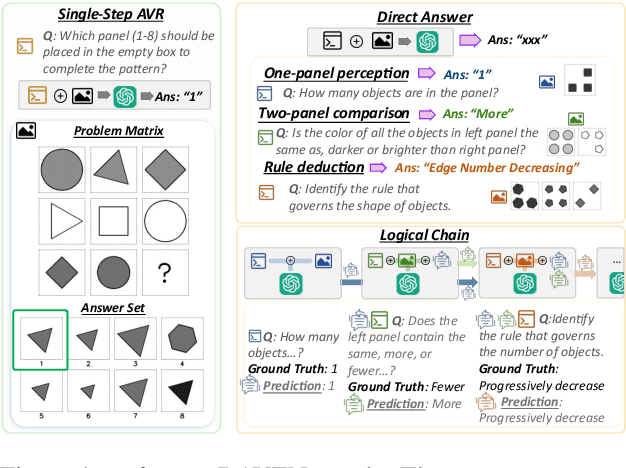


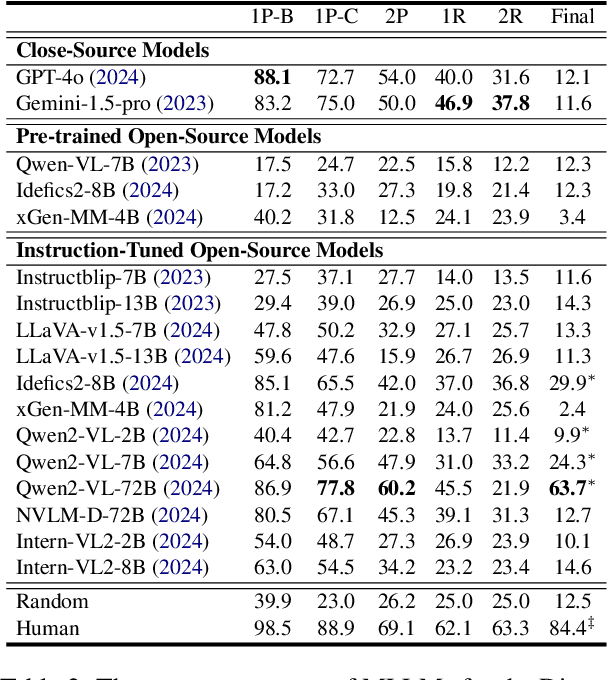
Abstract:Current Multimodal Large Language Models (MLLMs) excel in general visual reasoning but remain underexplored in Abstract Visual Reasoning (AVR), which demands higher-order reasoning to identify abstract rules beyond simple perception. Existing AVR benchmarks focus on single-step reasoning, emphasizing the end result but neglecting the multi-stage nature of reasoning process. Past studies found MLLMs struggle with these benchmarks, but it doesn't explain how they fail. To address this gap, we introduce MultiStAR, a Multi-Stage AVR benchmark, based on RAVEN, designed to assess reasoning across varying levels of complexity. Additionally, existing metrics like accuracy only focus on the final outcomes while do not account for the correctness of intermediate steps. Therefore, we propose a novel metric, MSEval, which considers the correctness of intermediate steps in addition to the final outcomes. We conduct comprehensive experiments on MultiStAR using 17 representative close-source and open-source MLLMs. The results reveal that while existing MLLMs perform adequately on basic perception tasks, they continue to face challenges in more complex rule detection stages.
Open-World Amodal Appearance Completion
Nov 20, 2024Abstract:Understanding and reconstructing occluded objects is a challenging problem, especially in open-world scenarios where categories and contexts are diverse and unpredictable. Traditional methods, however, are typically restricted to closed sets of object categories, limiting their use in complex, open-world scenes. We introduce Open-World Amodal Appearance Completion, a training-free framework that expands amodal completion capabilities by accepting flexible text queries as input. Our approach generalizes to arbitrary objects specified by both direct terms and abstract queries. We term this capability reasoning amodal completion, where the system reconstructs the full appearance of the queried object based on the provided image and language query. Our framework unifies segmentation, occlusion analysis, and inpainting to handle complex occlusions and generates completed objects as RGBA elements, enabling seamless integration into applications such as 3D reconstruction and image editing. Extensive evaluations demonstrate the effectiveness of our approach in generalizing to novel objects and occlusions, establishing a new benchmark for amodal completion in open-world settings. The code and datasets will be released after paper acceptance.
KALE: An Artwork Image Captioning System Augmented with Heterogeneous Graph
Sep 17, 2024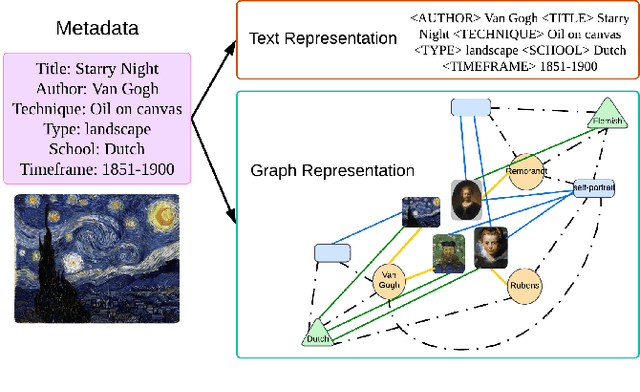
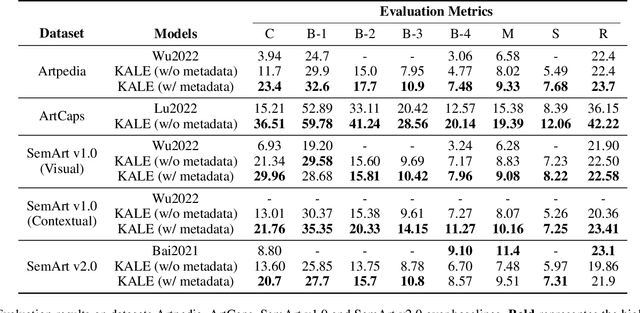
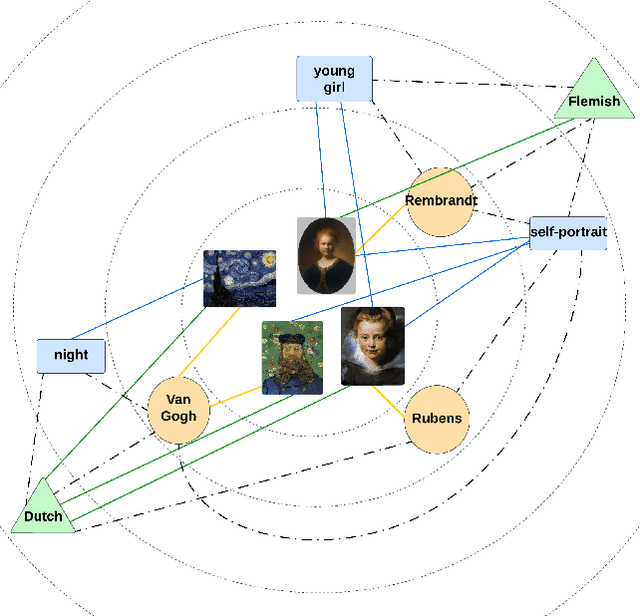
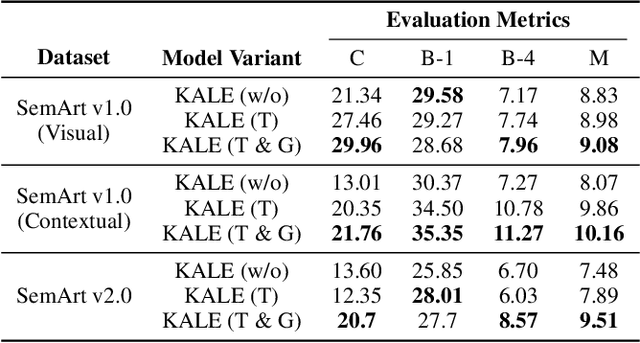
Abstract:Exploring the narratives conveyed by fine-art paintings is a challenge in image captioning, where the goal is to generate descriptions that not only precisely represent the visual content but also offer a in-depth interpretation of the artwork's meaning. The task is particularly complex for artwork images due to their diverse interpretations and varied aesthetic principles across different artistic schools and styles. In response to this, we present KALE Knowledge-Augmented vision-Language model for artwork Elaborations), a novel approach that enhances existing vision-language models by integrating artwork metadata as additional knowledge. KALE incorporates the metadata in two ways: firstly as direct textual input, and secondly through a multimodal heterogeneous knowledge graph. To optimize the learning of graph representations, we introduce a new cross-modal alignment loss that maximizes the similarity between the image and its corresponding metadata. Experimental results demonstrate that KALE achieves strong performance (when evaluated with CIDEr, in particular) over existing state-of-the-art work across several artwork datasets. Source code of the project is available at https://github.com/Yanbei-Jiang/Artwork-Interpretation.
 Add to Chrome
Add to Chrome Add to Firefox
Add to Firefox Add to Edge
Add to Edge